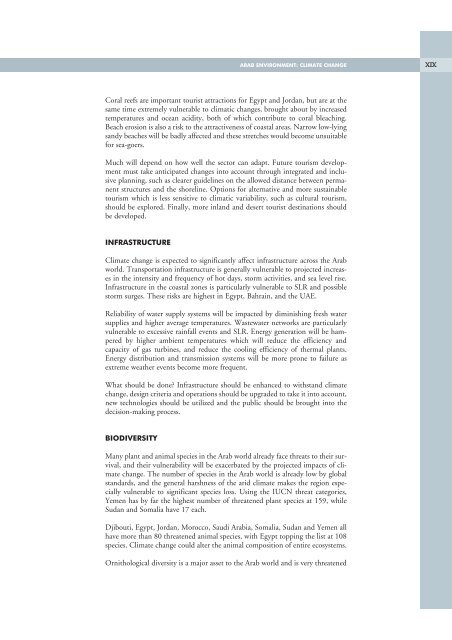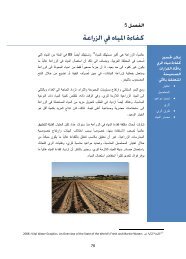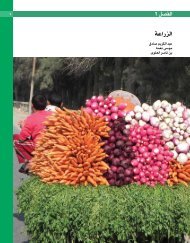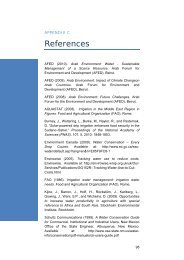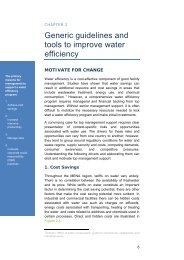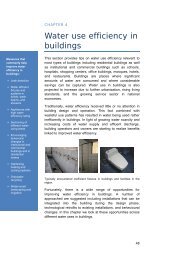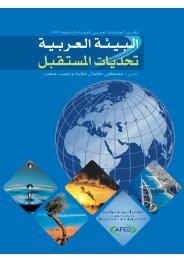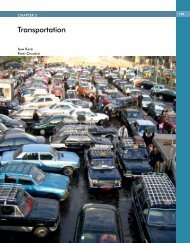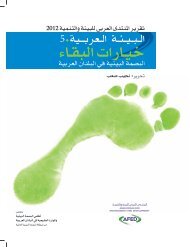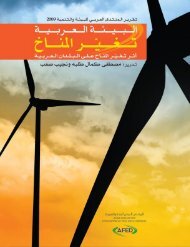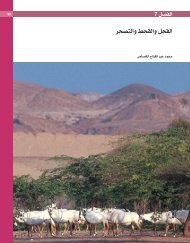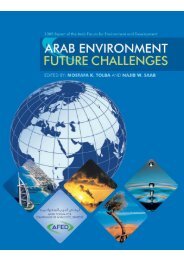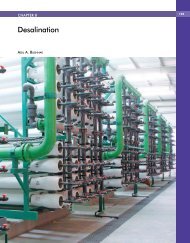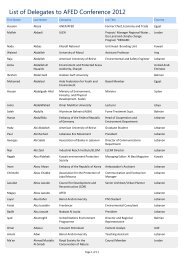Impact of Climate Change on Arab Countries - (IPCC) - Working ...
Impact of Climate Change on Arab Countries - (IPCC) - Working ...
Impact of Climate Change on Arab Countries - (IPCC) - Working ...
You also want an ePaper? Increase the reach of your titles
YUMPU automatically turns print PDFs into web optimized ePapers that Google loves.
ARAB ENVIRONMENT: CLIMATE CHANGE<br />
XIX<br />
Coral reefs are important tourist attracti<strong>on</strong>s for Egypt and Jordan, but are at the<br />
same time extremely vulnerable to climatic changes, brought about by increased<br />
temperatures and ocean acidity, both <str<strong>on</strong>g>of</str<strong>on</strong>g> which c<strong>on</strong>tribute to coral bleaching.<br />
Beach erosi<strong>on</strong> is also a risk to the attractiveness <str<strong>on</strong>g>of</str<strong>on</strong>g> coastal areas. Narrow low-lying<br />
sandy beaches will be badly affected and these stretches would become unsuitable<br />
for sea-goers.<br />
Much will depend <strong>on</strong> how well the sector can adapt. Future tourism development<br />
must take anticipated changes into account through integrated and inclusive<br />
planning, such as clearer guidelines <strong>on</strong> the allowed distance between permanent<br />
structures and the shoreline. Opti<strong>on</strong>s for alternative and more sustainable<br />
tourism which is less sensitive to climatic variability, such as cultural tourism,<br />
should be explored. Finally, more inland and desert tourist destinati<strong>on</strong>s should<br />
be developed.<br />
INFRASTRUCTURE<br />
<str<strong>on</strong>g>Climate</str<strong>on</strong>g> change is expected to significantly affect infrastructure across the <strong>Arab</strong><br />
world. Transportati<strong>on</strong> infrastructure is generally vulnerable to projected increases<br />
in the intensity and frequency <str<strong>on</strong>g>of</str<strong>on</strong>g> hot days, storm activities, and sea level rise.<br />
Infrastructure in the coastal z<strong>on</strong>es is particularly vulnerable to SLR and possible<br />
storm surges. These risks are highest in Egypt, Bahrain, and the UAE.<br />
Reliability <str<strong>on</strong>g>of</str<strong>on</strong>g> water supply systems will be impacted by diminishing fresh water<br />
supplies and higher average temperatures. Wastewater networks are particularly<br />
vulnerable to excessive rainfall events and SLR. Energy generati<strong>on</strong> will be hampered<br />
by higher ambient temperatures which will reduce the efficiency and<br />
capacity <str<strong>on</strong>g>of</str<strong>on</strong>g> gas turbines, and reduce the cooling efficiency <str<strong>on</strong>g>of</str<strong>on</strong>g> thermal plants.<br />
Energy distributi<strong>on</strong> and transmissi<strong>on</strong> systems will be more pr<strong>on</strong>e to failure as<br />
extreme weather events become more frequent.<br />
What should be d<strong>on</strong>e Infrastructure should be enhanced to withstand climate<br />
change, design criteria and operati<strong>on</strong>s should be upgraded to take it into account,<br />
new technologies should be utilized and the public should be brought into the<br />
decisi<strong>on</strong>-making process.<br />
BIODIVERSITY<br />
Many plant and animal species in the <strong>Arab</strong> world already face threats to their survival,<br />
and their vulnerability will be exacerbated by the projected impacts <str<strong>on</strong>g>of</str<strong>on</strong>g> climate<br />
change. The number <str<strong>on</strong>g>of</str<strong>on</strong>g> species in the <strong>Arab</strong> world is already low by global<br />
standards, and the general harshness <str<strong>on</strong>g>of</str<strong>on</strong>g> the arid climate makes the regi<strong>on</strong> especially<br />
vulnerable to significant species loss. Using the IUCN threat categories,<br />
Yemen has by far the highest number <str<strong>on</strong>g>of</str<strong>on</strong>g> threatened plant species at 159, while<br />
Sudan and Somalia have 17 each.<br />
Djibouti, Egypt, Jordan, Morocco, Saudi <strong>Arab</strong>ia, Somalia, Sudan and Yemen all<br />
have more than 80 threatened animal species, with Egypt topping the list at 108<br />
species. <str<strong>on</strong>g>Climate</str<strong>on</strong>g> change could alter the animal compositi<strong>on</strong> <str<strong>on</strong>g>of</str<strong>on</strong>g> entire ecosystems.<br />
Ornithological diversity is a major asset to the <strong>Arab</strong> world and is very threatened


